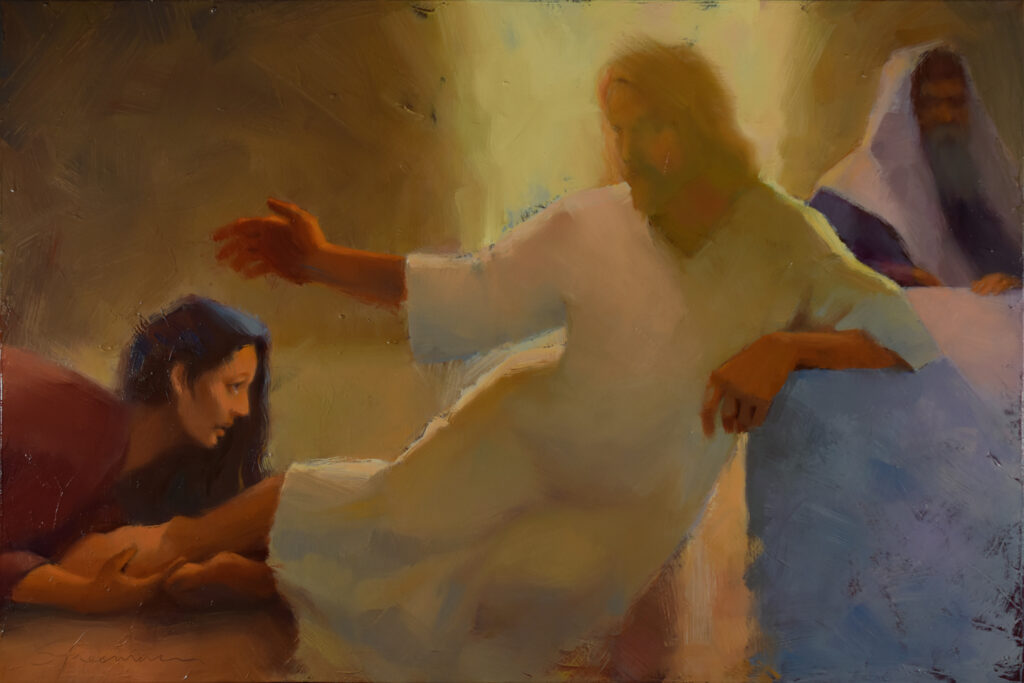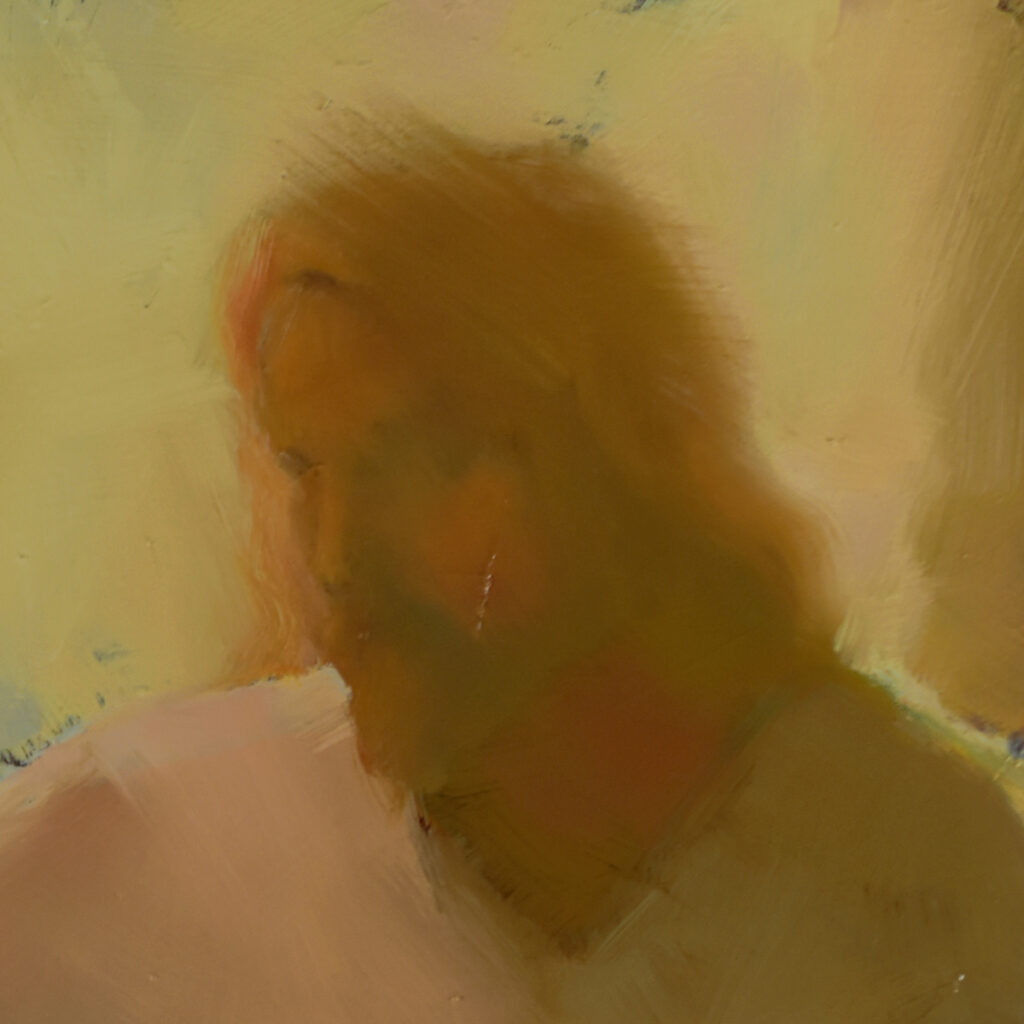One of the things I love about the Jesus of the Bible is how He revolutionized the status of women. His every interaction with women had unexpectedly affirming aspects for the time in which He lived. Women seemed to feel free to approach Him. Female followers supported Him financially. Even non-Jewish women received blessing from Him. The resurrection of Jesus is arguably the capstone of His redemptive work. To me it is noteworthy that He first entrusted the news of this world-changing miracle to a small group of women, knowing their testimony would be doubted.
A friend recently commissioned me to do an oil painting based on a passage found in the 7th chapter of the gospel of Luke. This passage describes one of Jesus’s affirming interactions with a woman in the face of religious self-righteousness.
The passage tells of a Pharisee issuing an invitation to Jesus, asking Him to come and dine with him at his house. This event was likely expected to feature a religious discussion around a meal. The invited men would recline around the table, while the uninvited villagers would be allowed to listen to the discussion from the perimeter of the room. Upon entering, each honored guest would be greeted with a kiss and have his feet washed. When Jesus enters Simon’s house, these customary gestures are not offered to Him. He quietly receives this insult and reclines at table.
The woman in the story is waiting for Jesus at the perimeter, holding an alabaster vial of perfume. She surely would’ve noticed the insult and she more than makes up for it, pouring out her love upon Jesus. She courageously approaches Him from behind, weeping. She kneels down and wets His feet with her tears. Then, breaking taboo, she lets down her hair in public and begins wiping His feet with her hair. She humbly kisses His feet repeatedly and anoints them with the perfume. The fragrance reaches everyone in the room.
It is an incredibly moving display, and Simon inwardly judges both the woman and Jesus for it. Jesus then speaks, asking Simon a question that illuminates exactly what is happening. And then, in what is my favorite part of the story, the narrative says, “…Turning toward the woman, He said to Simon, ‘Do you see this woman?…’” This is the moment depicted in my painting.
I love that it says, “turning toward the woman.” Surely up to this point she must have felt alone, embarrassed, outcast, and perhaps ashamed, to be doing these things in a Pharisee’s house as an uninvited guest. But now Jesus is facing her. Facing her, seeing her, He continues speaking to Simon:
…I entered your house; you gave me no water for my feet,
but she has wet my feet with her tears and wiped them with her hair.
You gave me no kiss;
but she, since the time I came in, has not ceased to kiss my feet.
You did not anoint my head with oil,
but she has anointed my feet with perfume.
For this reason I say to you, her sins, which are many, have been forgiven,
for she loved much; but he who is forgiven little, loves little.
Then He said to her, “Your sins have been forgiven.”
Those who were reclining at the table with Him began to say to themselves, “Who is this man who even forgives sins?”
And He said to the woman, “Your faith has saved you; go in peace.”
The light in the painting helps to tell the story. The face of Jesus is suffused with light. The woman’s upturned face receives the Light, while Simon’s face remains in shadow.
Some of the cultural insights here are inspired by one of my primary spiritual mentors, Jonathan Williams. You can order his book, “The Women Jesus Loved,” here.


